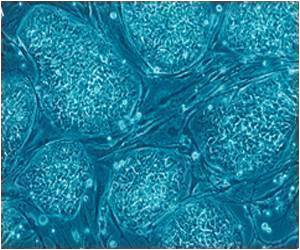
"We've been trying to track down the genetic and molecular basis of naturally occurring traits — such as hair and skin pigmentation — in fish and humans to get insight into the general principles by which traits evolve," said David Kingsley, PhD, professor of developmental biology. "Now we find that one of the most crucial signaling molecules in mammalian development also affects hair color."
Kingsley, who is also a Howard Hughes Medical Institute investigator, is the senior author of the study, which will be published online June 1 in Nature Genetics. Research specialist Catherine Guenther, PhD, is the lead author.
The researchers found that the blond hair commonly seen in Northern Europeans is caused by a single change in the DNA that regulates the expression of a gene that encodes a protein called KITLG, also known as stem cell factor. This change affects how much KITLG is expressed in the hair follicles without changing how it's expressed in the rest of the body. Introducing the change into normally brown-haired laboratory mice yields an animal with a decidedly lighter coat — not quite Norma Jeane to Marilyn Monroe, but significant nonetheless.
The study shows that even small, tissue-specific changes in the expression of genes can have noticeable morphological effects. It also emphasizes how difficult it can be to clearly connect specific DNA changes with particular clinical or phenotypic outcomes. In this case, the change is subtle: A single nucleotide called an adenine is replaced by another called a guanine on human chromosome 12. The change occurs over 350,000 nucleotides away from the KITLG gene and only alters the amount of gene expression about 20 percent — a relatively tiny blip on a biological scale more often assessed in terms of gene expression being 100 percent "on" or "off."
"What we're seeing is that this regulatory region exercises exquisite control over where, and how much, KITLG expression occurs," said Kingsley. "In this case, it controls hair color. In another situation — perhaps under the influence of a different regulatory region — it probably controls stem cell division. Dialing up and down the expression of an essential growth factor in this manner could be a common mechanism that underlies many different traits."
Advertisement
In the current study, the researchers had a couple of clues as to which regulatory regions might be important in hair color. One was the fact that the adenine-to-guanine nucleotide change had been previously associated with blond hair color in Northern Europeans in genome-wide association studies. The second was the existence in laboratory mice of a large mutation called an inversion that affects several million nucleotides near the KITLG gene. Mice with two copies of this mutation (one on each chromosome) are white; those with just one copy are significantly lighter than wild-type mice. But it wasn't known exactly how either of these changes affects hair pigment.
Advertisement
Further study showed that the region of human DNA that contained the single nucleotide change associated with blondness specifically affected the expression of KITLG only in hair follicles.
Finally, the researchers replaced the mouse mutation with human sequences with and without the blond-associated nucleotide change. Those with the guanine tied to blond hair in humans did in fact have significantly lighter hair.
"Because this nucleotide switch only effects the KITLG expression by about 20 percent or so, it would have been difficult to believe it would have such an effect on hair color," Kingsley said. "For that we needed these very carefully constructed, well-controlled animal models. They clearly showed us that this small difference in expression is enough to switch hair color in these animals."
He added: "It's clear that this hair color change is occurring through a regulatory mechanism that operates only in the hair. This isn't something that also affects other traits, like intelligence or personality. The change that causes blond hair is, literally, only skin deep."
Source-Eurekalert














